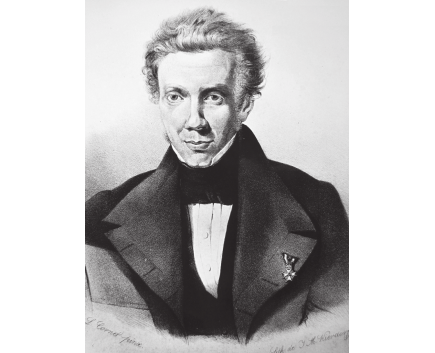
When Was Kratom Discovered?
Kratom is reported to have been consumed by people in Southeast Asia for centuries, at the very least. It has been documented in Thai pharmacopeia since the mid 15th century, but was likely consumed earlier.
However, kratom was not discovered by Westerners for another 400 years.
Pieter Willem Korthals was a Dutch botanist who played a significant role in the discovery and initial documentation of kratom (Mitragyna speciosa). Korthals was born on February 12, 1807, in Amsterdam, Netherlands, and he lived during the 19th century.
Korthals worked as a botanist for the Dutch East India Company, and during his time in Southeast Asia, he conducted extensive botanical research. It was during one of his expeditions to the region, likely in the early to mid-19th century, that he encountered kratom. Korthals is credited with being one of the first Western scientists to formally describe kratom.
In 1839, Korthals published a scientific journal titled "Observations on the Botany and Pharmacology of Kratom (Mitragyna speciosa)," in which he provided a detailed botanical description of the plant and documented its traditional use by indigenous communities in Southeast Asia. He noted its use as a traditional remedy among the populations of Thailand (formerly Siam), Malaysia, and surrounding regions.
Korthals observed that kratom leaves were commonly chewed by workers and laborers in Southeast Asia to increase energy levels and enhance productivity, particularly among those engaged in physically demanding tasks.
Korthals noted that kratom was also consumed recreationally and socially, often in the form of a beverage made by brewing the leaves. It was sometimes consumed during communal gatherings or social events.
Korthals' work helped introduce kratom to the scientific community in the West, although initially, it did not gain significant attention outside of botanical circles. However, his documentation laid the groundwork for further research into kratom's properties and potential applications.
While Korthals is primarily known for his discovery and documentation of kratom, he made other contributions to botany during his career. He conducted extensive botanical surveys in various parts of Southeast Asia, collecting and cataloging numerous plant species:
Korthals is credited with the discovery and documentation of Rafflesia arnoldii, one of the largest and most infamous flowers in the world. This parasitic plant, native to the rainforests of Sumatra and Borneo, produces the largest individual flower of any flowering plant. Korthals' discovery of Rafflesia arnoldii occurred in 1818.
Korthals also documented several species of pitcher plants belonging to the genus Nepenthes during his botanical explorations. Pitcher plants are carnivorous plants known for their modified leaves that form pitfall traps to capture and digest insects and other small prey. Korthals' work contributed to the understanding of the diversity and ecology of Nepenthes species in Southeast Asia.
Korthals conducted botanical research on the genus Cinchona, which includes several species of trees known for their medicinal properties. Cinchona trees are the natural source of quinine, a compound used to treat malaria. Korthals' work likely contributed to the understanding of the distribution and diversity of Cinchona species in their native habitats.
Pieter Willem Korthals passed away on March 8, 1892, leaving behind a legacy as a pioneering botanist who contributed to the understanding of the plant diversity in Southeast Asia and introduced kratom to the Western scientific community.
In Same Category
Related by Tags
- Tennessee Republican Resolution Signals Desire to Ban Kratom
- Scientists Call for Kratom Legalization in Malaysia
- Thai Police Bust Makers of Cough Syrup Used to Make Illicit Kratom Cocktails
- Thailand Drafts Import/Export Rules for Newly Legal Kratom Market
- Indonesian Governor Hopes Kratom Prices Can Increase for Farmers














Comments
Leave your comment